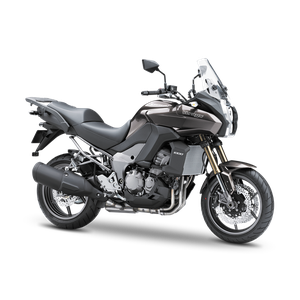Kawasaki Versys 1000 (2019–2022): The Swiss Army Knife of Sport Touring
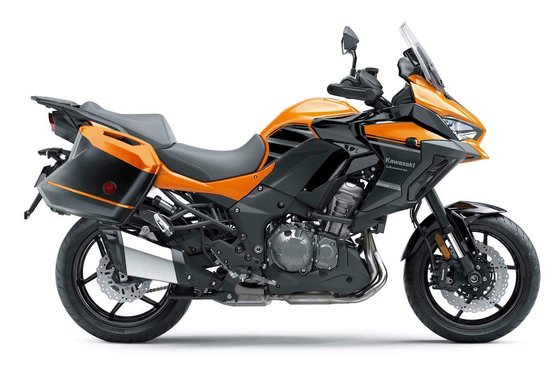
Introduction
The Kawasaki Versys 1000, produced between 2019 and 2022, isn’t just a motorcycle—it’s a declaration of intent. Designed to blur the lines between sportbike agility and touring comfort, this inline-four-powered machine thrives on contradictions. Over a week-long test ride through mountain passes, highways, and cobblestone streets, the Versys 1000 proved it’s equally at home carving corners as it is devouring continental distances. Let’s dissect why this generation remains a compelling choice for riders who refuse to compromise.
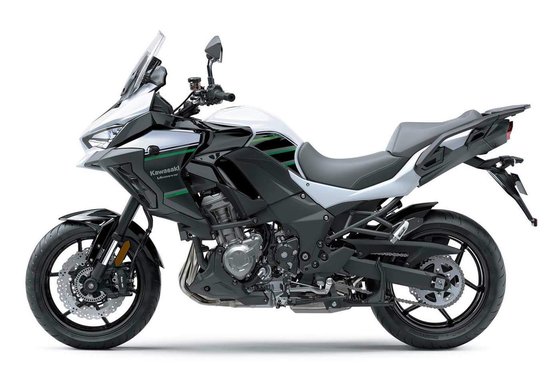
Engine Performance: The Heart of a Wolf in Sheep’s Clothing
At its core lies a 1,043 cc liquid-cooled inline-four engine, producing 120 PS (88 kW) at 9,000 RPM and 102 Nm of torque at 7,500 RPM. Kawasaki tuned this powerplant for flexibility, not just peak numbers.
Key Highlights:
- Low-Mid Range Dominance: The real magic happens between 4,000–8,000 RPM. Roll on the throttle in third gear, and the bike surges forward with a refined howl, bypassing the need for frantic downshifts.
- Electronic Throttle Valves (ETV): Delivering silky-smooth response, the ride-by-wire system eliminates abruptness, whether navigating city traffic or executing overtakes.
- Assist & Slipper Clutch: Lighter lever pull (a blessing in stop-and-go traffic) and anti-hop reassurance during aggressive downshifts.
Fuel efficiency sits at 5.5 L/100 km (42.7 MPG) under relaxed riding—a figure that drops when exploiting the engine’s sportier side. The 21-liter tank offers a 380 km (236 mi) range, ideal for long hauls.
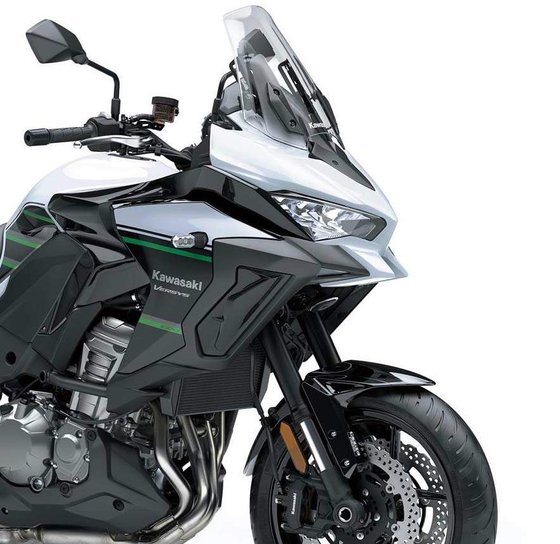
Handling & Comfort: A Chassis That Adapts to Your Mood
Kawasaki’s twin-tube aluminum frame strikes a balance between rigidity and compliance. Paired with 43 mm inverted Showa forks (150 mm travel) and a Horizontal Back-Link rear shock (152 mm travel), the Versys masks its 257 kg (566 lb) weight with surprising grace.
Riding Dynamics:
- Sport Mode: Tighten damping via KECS (Kawasaki Electronic Control Suspension), and the bike transforms. Sweeping bends become playgrounds, with minimal dive under braking.
- Rain/Road Modes: Soften the suspension for pockmarked urban roads, where the Versys floats over imperfections that’d upset stiffer competitors.
- Ergonomics: The 840 mm (33.1") seat (adjustable to 820 mm) suits riders up to 6’2". Wide handlebars and relaxed peg positioning create a natural, fatigue-free triangle.
The adjustable windscreen—a standout feature—can be raised by 70 mm without tools, deflecting windblast at highway speeds.
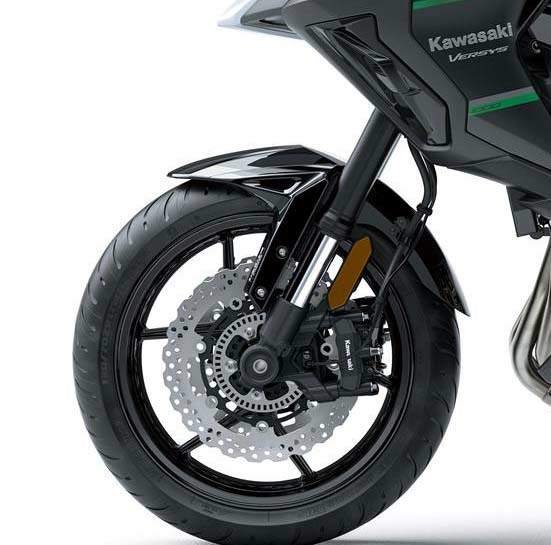
Electronics & Features: Smarter Than Your Average Bear
This generation introduced Kawasaki’s most sophisticated tech suite pre-2023. The 6-axis IMU orchestrates every electronic interaction, making the Versys feel like it’s reading your mind.
Standout Tech:
- KTRC (Traction Control): Three modes—Mode 1 for dry tarmac (minimal intervention), Mode 2 for wet roads, Mode 3 for gravel-strewn surprises.
- KIBS (Intelligent ABS): Borrowed from the Ninja H2, it modulates brake pressure with supersport precision. The dual 310 mm front discs and radial-mount calipers inspire confidence.
- TFT Display: The 4.3" screen (SE models) offers smartphone connectivity, navigation prompts, and even logs lean angles for post-ride bragging rights.
- Cruise Control: A godsend on monotonous highways, adjustable via intuitive handlebar controls.
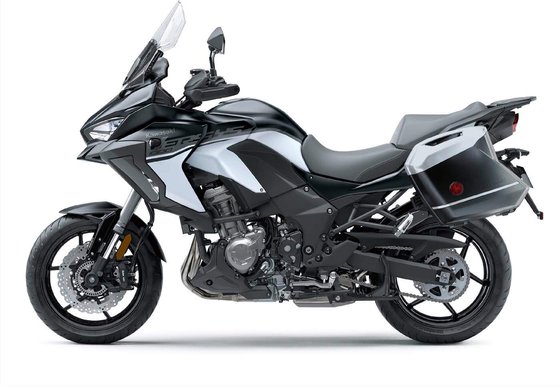
Competition: How the Versys Stacks Up
1. Yamaha Tracer 9 GT (2021–2022)
- Engine: 890 cc CP3 triple (119 PS)
- Pros: Lighter (220 kg), quickshifter, sharper handling.
- Cons: Less touring-focused, smaller fuel tank (18 L).
- Versys Edge: Superior wind protection, inline-four character, and 10% more torque for two-up touring.
2. Suzuki V-Strom 1050XT (2020–2022)
- Engine: 1,037 cc V-twin (106 PS)
- Pros: Off-road prowess, lower seat height (850 mm).
- Cons: Rudimentary electronics, buzzy at high RPM.
- Versys Edge: Smoother power delivery, advanced IMU-based tech, and LED lighting.
3. BMW R 1250 GS
- Engine: 1,254 cc boxer twin (136 PS)
- Pros: Iconic status, superior low-end grunt.
- Cons: $5K+ pricier, heavier (249 kg).
- Versys Edge: Value proposition, sportier road manners.
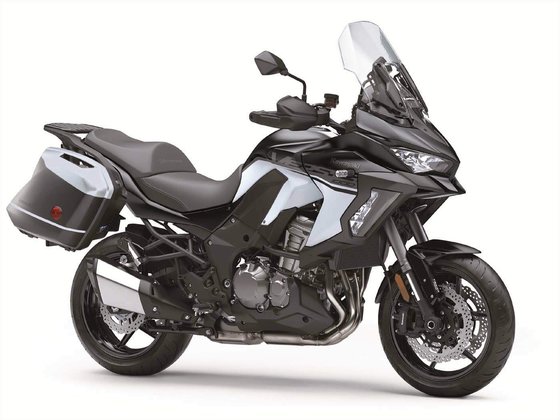
Maintenance: Keeping the Beast Happy
As a MOTOPARTS.store journalist, here’s your cheat sheet for hassle-free ownership:
Critical Points:
- Chain & Sprockets: The 15/43 sprocket combo wears faster if ridden hard. Upgrade to an X-ring chain (e.g., DID 525VX2) for longevity.
- Oil Changes: Use 3.8L of SAE 10W-40 (API SG/JASO MA2). Kawasaki’s 6,000 km (3,700 mi) interval is conservative—stick to it.
- Brake Fluid: Flush with DOT 4 annually. Consider sintered pads (e.g., EBC FA296HH) for aggressive riders.
- Tire Pressures: 2.5 bar (36 psi) front / 2.9 bar (42 psi) rear—deviate by 0.2 bar for loaded touring.
Recommended Upgrades:
- LED Auxiliary Lights: Boost visibility with MOTOPARTS.store’s 6,000-lumen kits.
- Ergonomic Seat: The stock perch can feel firm after 300 km—our AirFlow seat adds gel inserts without altering height.
- Adjustable Levers: Perfect reach for smaller hands via MOTOPARTS.store’s CNC-machined options.
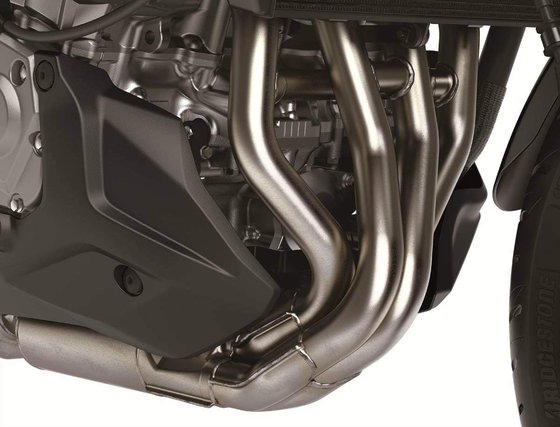
Final Verdict
The 2019–2022 Kawasaki Versys 1000 isn’t the lightest, fastest, or most exotic sport-tourer. What it is, however, is a masterclass in balance. It’s the motorcycle equivalent of a Michelin-starred chef who also fixes your carburetor—equally adept at thrilling backroad blasts and transcontinental slogs. For riders seeking one bike to rule all roads (except dirt trails), the Versys remains a benchmark.
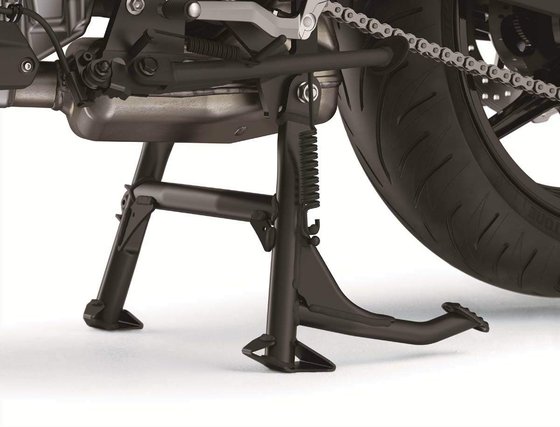
Stay tuned to MOTOPARTS.store for curated upgrades that’ll make your Versys 1000 even more versatile. From crash bars to premium windscreens, we’ve got your back—wherever the road takes you.









Specifications sheet
| Engine | |
|---|---|
| Stroke: | Four-stroke |
| Max power: | 88 kW | 118.0 hp |
| Max torque: | 102 Nm |
| Fuel system: | Fuel Injection (Ø38 mm x 4 Keihin throttle bodies with oval sub-throttles) |
| Max power @: | 9000 rpm |
| Displacement: | 1043 ccm |
| Max torque @: | 7500 rpm |
| Bore x stroke: | 77.0 x 56.0 mm (3.0 x 2.2 in) |
| Configuration: | Inline |
| Cooling system: | Liquid |
| Compression ratio: | 10.3:1 |
| Lubrication system: | Forced lubrication, wet sump |
| Number of cylinders: | 4 |
| Dimensions | |
|---|---|
| Wheelbase: | 1520 mm (59.8 in) |
| Wet weight: | 257 |
| Seat height: | 840 mm (33.1 in) |
| Overall width: | 950 mm (37.4 in) |
| Overall height: | 1490 mm (58.7 in) |
| Overall length: | 2270 mm (89.4 in) |
| Ground clearance: | 150 mm (5.9 in) |
| Fuel tank capacity: | 21 L (5.5 US gal) |
| Drivetrain | |
|---|---|
| Final drive: | chain |
| Gear ratios: | {'1st': '2.692 (35/13)', '2nd': '1.950 (39/20)', '3rd': '1.529 (26/17)', '4th': '1.304 (30/23)', '5th': '1.136 (25/22)', '6th': '0.958 (23/24)'} |
| Chain length: | 116 |
| Transmission: | 6-speed, wet multi-disc manual clutch |
| Rear sprocket: | 43 |
| Front sprocket: | 15 |
| Final reduction ratio: | 2.867 (43/15) |
| Primary reduction ratio: | 1.627 (83/51) |
| Electronics | |
|---|---|
| ABS: | Kawasaki Intelligent anti-lock Brake System (KIBS) |
| Riding modes: | Sport/Road/Rain/Rider |
| Quick shifter: | KQS (Kawasaki Quick Shifter) for clutchless up/down shifts |
| Cruise control: | Electronic |
| Instrumentation: | TFT color LCD screen with smartphone connectivity |
| Traction control: | 3-mode KTRC |
| Suspension control: | KECS (Kawasaki Electronic Control Suspension) |
| Maintenance | |
|---|---|
| Rear tire: | 180/55-z-17 |
| Engine oil: | 10W40 |
| Front tire: | 120/70-z-17 |
| Brake fluid: | DOT 4 |
| Spark plugs: | NGK CR9EIA-9 |
| Spark plug gap: | 0.8–0.9 mm |
| Coolant capacity: | 2.6 |
| Engine oil capacity: | 3.8 |
| Chain lubrication interval: | Every 1000 km (600 mi) |
| Engine oil change interval: | Every 5000 km or 2 years |
| Valve clearance (intake, cold): | 0.10–0.20 mm |
| Valve clearance check interval: | 24,000 km (15,000 mi) |
| Valve clearance (exhaust, cold): | 0.20–0.30 mm |
| Recommended tire pressure (rear): | 2.9 bar (42 psi) |
| Recommended tire pressure (front): | 2.5 bar (36 psi) |
| Chassis and Suspension | |
|---|---|
| Rake: | 27° |
| Frame: | Aluminum twin-spar |
| Trail: | 106 mm (4.2 in) |
| Rear brakes: | Single 250 mm petal disc, 1-piston caliper (ABS) |
| Front brakes: | Dual 310 mm petal discs, radial-mount 4-piston calipers (ABS) |
| Rear suspension: | Horizontal Back-link monoshock with KECS-controlled damping and electronic preload adjustment |
| Front suspension: | 43 mm inverted fork with KECS-controlled rebound/compression damping and manual preload adjustment |
| Rear wheel travel: | 150 mm (5.9 in) |
| Front wheel travel: | 150 mm (5.9 in) |



